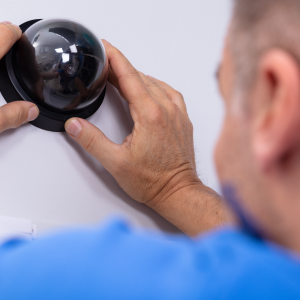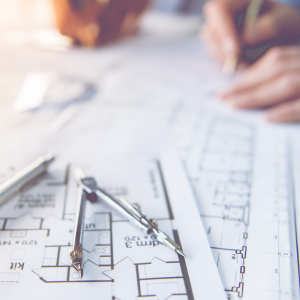- Licensing Training
- Earn CEUS
- Career Programs
- Certifications
- Security Certifications
- Certified Alarm Technician (CAT) Level 1
- Certified Video Systems Specialist (CVSS)
- Certified Video Technician (CVT)
- Certified Systems Integrator (CSI)
- Certified Alarm Technician (CAT) Level 2
- Certified Intrusion Technician (CIT) Level 2
- Certified Service Technician (CST)
- Certified Security Systems Integrator (CSSI)
- Fire Certifications
- Sales Certifications
- Renew Your Certification
- Security Certifications
- About
- Contact Us
- Alabama
- Alaska
- Arizona
- Arkansas
- California
- Colorado
- Connecticut
- Delaware
- Florida
- Georgia
- Hawaii
- Idaho
- Illinois
- Indiana
- Iowa
- Kansas
- Kentucky
- Louisiana
- Maine
- Maryland
- Massachusetts
- Michigan
- Minnesota
- Mississippi
- Missouri
- Montana
- Nebraska
- Nevada
- New Hampshire
- New Jersey
- New Mexico
- New York
- North Carolina
- North Dakota
- Ohio
- Oklahoma
- Oregon
- Pennsylvania
- Rhode Island
- South Carolina
- South Dakota
- Tennessee
- Texas
- Utah
- Vermont
- Virginia
- Washington
- West Virginia
- Wisconsin
- Wyoming
- Licensing Training
- Earn CEUS
- Career Programs
- Certifications
- Security Certifications
- Certified Alarm Technician (CAT) Level 1
- Certified Video Systems Specialist (CVSS)
- Certified Video Technician (CVT)
- Certified Systems Integrator (CSI)
- Certified Alarm Technician (CAT) Level 2
- Certified Intrusion Technician (CIT) Level 2
- Certified Service Technician (CST)
- Certified Security Systems Integrator (CSSI)
- Fire Certifications
- Sales Certifications
- Renew Your Certification
- Security Certifications
- About
- Contact Us
- Core Courses
- Printed Course Material Add-Ons
- Assessments
- Class Templates
- Group Products
- Uncategorized
- Continuing Education Courses
- ESA Fire Certifications
- ESA Security Certifications
- Certified Alarm Technician - Level I
- Certified Alarm Technician (CAT) Level II
- Certified Intrusion Technician (CIT) Level II
- Certified Security Systems Integrator (CSSI)
- Certified Service Technician (CST)
- Certified Systems Integrator (CSI)
- Certified Video Systems Specialist (CVSS)
- Certified Video Technician (CVT)
- ESA Sales Certifications
- States
- Alabama
- Alaska
- Arizona
- Arkansas
- California
- Colorado
- Connecticut
- Delaware
- Florida
- Georgia - Cobb County
- Hawaii
- Idaho
- Illinois
- Indiana
- Iowa
- Kansas - City of Wichita/Sedgwick County
- Kentucky - Louisville
- Louisiana
- Maine
- Maryland
- Massachusetts
- Michigan
- Minnesota
- Mississippi
- Missouri - St. Louis County
- Montana
- Nebraska
- Nevada
- New Hampshire
- New Jersey
- New Mexico
- New York
- North Carolina
- North Dakota
- Ohio
- Oklahoma
- Oregon
- Pennsylvania
- Rhode Island
- South Carolina
- South Dakota
- Tennessee
- Texas
- Utah
- Vermont
- Virginia
- West Virginia
- Wisconsin
- Wyoming
- Washington
- Course Format
Residential Networking Basics
$140.00

This course provides a good foundation for those technicians installing equipment that communicates through an IP-based structure. The scope of this course is directed towards equipment that is used in residential systems. This course is designed to provide you with basic level knowledge of things like: working with IPs, understanding routers, network types, and general troubleshooting.
Upon completing this course, students will be able to:
- Identify fundamental networking concepts.
- Define when and why networking may be necessary and what types of information needs to be gathered to do it.
- Describe ISPs and their role in a residential network.
- Identify key components of a typical residential installation.
- Understand the function and purpose of each component.
- Discuss twisted pair networking cable.
- Define Static vs. Dynamic IP address.
- Identify differences between Public IP address and Private IP address.
- Determine the Public IP address of a LAN.
- Understand the purpose of port forwarding rules.
- Use common troubleshooting tools and tasks.
- Configure Network Security to reduce problems.
- Understand common problems associated with residential systems and ISPs.
- Perform troubleshooting to isolate the root cause of issues.
- Discuss avenues for resolving common ISP related issues.
- Use remote access applications
- Ad Hoc tools
- Windows Remote Desktop
- Describe testing and commissioning of a system and describe how they differ.
- Identify steps to take in order to thoroughly test a system.
- Explain commissioning and its importance.
What to expect in this course: The presentation includes text, audio, graphics, videos and activities to help you absorb the information presented. This course has a short quiz at the end, which you will be required to pass with a 70% or greater to complete the course.
State Approvals/Recognition
State approvals, include:
AL-Alabama Electronic Security Board of Licensure (AESBL)
CA-Approved through WBFAA. Must submit through WBFAA, conversion fees apply.
LA-Louisiana Office of the State Fire Marshal: Life Safety & Property Protection Advisory Board (LSPPA)
Louisville, KY-Louisville Metro Police Department (LMPD)
MS-Mississippi Office of the State Fire Marshal: Electronic Protection Systems Division
NC-North Carolina Department of Public Safety: Alarm Systems Licensing Board (NC DPS-ASLB)
TX-Texas Department of Public Safety: Private Security Bureau (TX DPS-PSB)




